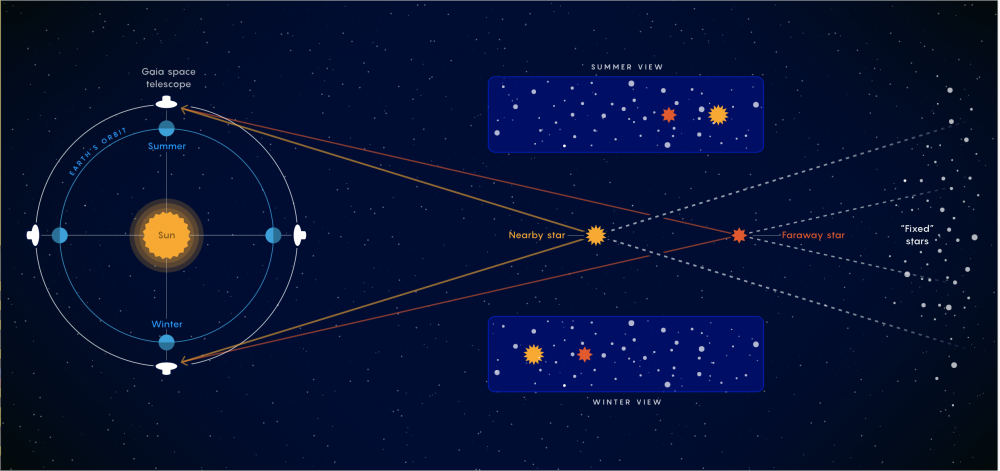Astronomers Get Their Wish, and a Cosmic Crisis Gets Worse

Samuel Velasco/Quanta Magazine
The Gaia telescope gauges the distances to stars by measuring their parallax, or apparent shift over the course of a year. Closer stars have a larger parallax.
Natalie Wolchover - December 17, 2020
On December 3, humanity suddenly had information at its fingertips that people have wanted for, well, forever: the precise distances to the stars.
“You type in the name of a star or its position, and in less than a second you will have the answer,” Barry Madore, a cosmologist at the University of Chicago and Carnegie Observatories, said on a Zoom call last week. “I mean …” He trailed off.
“We’re drinking from a firehose right now,” said Wendy Freedman, also a cosmologist at Chicago and Carnegie and Madore’s wife and collaborator.
“I can’t overstate how excited I am,” Adam Riess of Johns Hopkins University, who won the 2011 Nobel Prize in Physics for co-discovering dark energy, said in a phone call. “Can I show you visually what I’m so excited about?” We switched to Zoom so he could screen-share pretty plots of the new star data.
See full text
See also a recent article on the debate about the Hubble constant